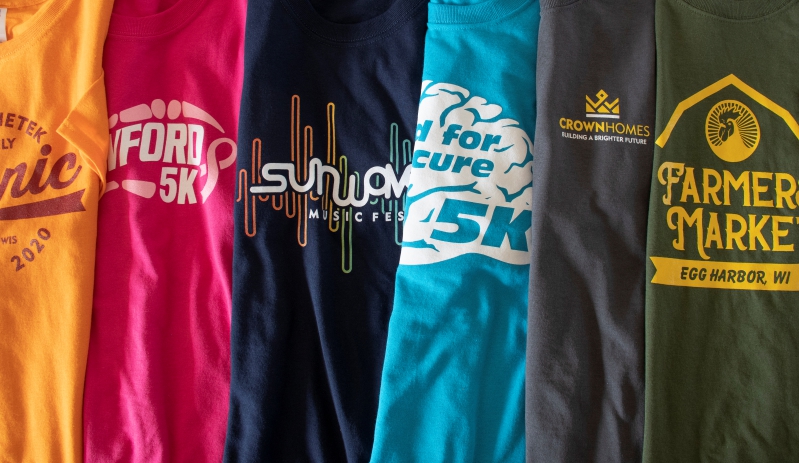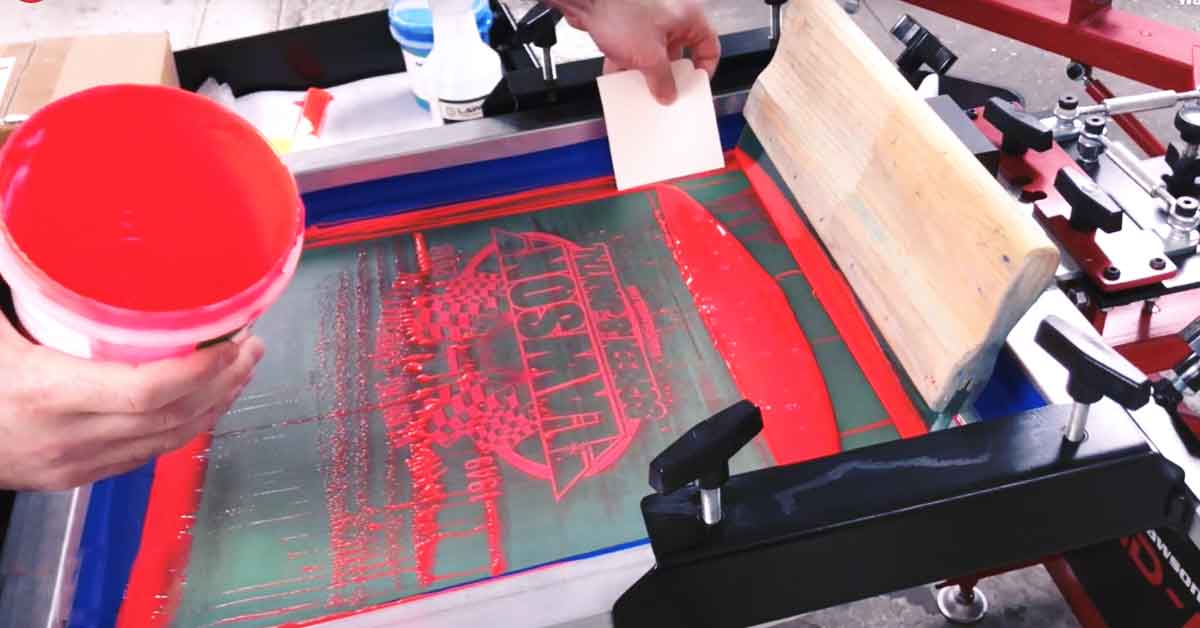Tx Tees Can Be Fun For Everyone
Tx Tees Can Be Fun For Everyone
Blog Article
How Tx Tees can Save You Time, Stress, and Money.
Table of ContentsThings about Tx Tees6 Simple Techniques For Tx TeesTx Tees for DummiesUnknown Facts About Tx TeesThe Ultimate Guide To Tx TeesThe 7-Minute Rule for Tx Tees8 Easy Facts About Tx Tees Described
Add up various other prices, like the number of energies it takes to run the store and the price of ink and solution per style. Take the print below.The solution needs to only be a few cents considering that you 'd just need to coat one screen for this task. So just how much should you charge per tee shirt to earn a profit? Generally, printers try to make up to 45% profit on a print task. Right here's a table to aid you establish that: complete expense per product percent of wanted earnings as a decimal (example:.25 or.45) revenue made per product per job Now let's talk regarding the productivity of DTF.

With DTF, you can print a handful of t shirts, or just one. Both screen printing and DTF have their particular niches in the world.
The Tx Tees PDFs
The best means to know? Ask around and see what printing shop like your own are doing. custom t-shirt design. Attempt both out and see which you like better
When you're selecting what kind of printing approach to make use of for printing your artwork designs on your garments, it is necessary that you recognize the distinctions in between these 2 strategies so you can optimize outcomes while decreasing prices. Screen printing is one of the most commonly used technique for printing designs on textiles.
DTG printing is additionally called spot or straight to garment printing because it publishes just what is required as opposed to making a screen as screen printers do. https://www.intensedebate.com/profiles/russellcostello79602. Display printing works by display filler squeegee screen printing ink display mesh screen, then moving the picture to garment making use of warm and/or stress
The DTG printer utilizes unique dye-sublimation inks that are used right into a pre-designed image by a digital printing system. The inks become part of the textile, allowing for dynamic shades and exceptional detail. It's additionally called area or straight to garment printing because it publishes only what is required instead of making a display as screen printers do.
The Single Strategy To Use For Tx Tees
Initially, it's much faster - you can print a fullcolor image in minutes, instead of hours for screen printing. Second, there's no established time or prices entailed - you can publish any kind of layout you like, without having to create a screen first. Third, there's no waste - because screen printers display print one style each time, they have to screen each color independently.
The paper is really pricey and can just be used as soon as. Once it's published on, it has to be thrown out. - The first acquisition price is reduced than the ahead of time financial investment of DTG printers- You can publish multi-color styles one screen each time rather than needing to publish each shade individually like DTG printing.

Getting The Tx Tees To Work
Rather of making use of screen mesh as screen printers do, dye sublimation printers utilize laser modern technology to transfer your images onto garments or paper. A warm procedure moves the color from its solid-state straight into the gas phase which consequently merges it onto textile substratums when they are swiftly heated to heats under high pressure.
Sublimation printing is environmentally friendly. It utilizes less water than screenprinting, and since it does not entail the usage of hazardous solvents, it's safe for all kinds of clothing. The color sublimation inks are likewise unsmelling when healed, unlike display printers that make use of harmful chemicals during the screen printing procedure that leave an undesirable smell.
They additionally save money on expensive devices like exposure units because dye sublimation printers don't call for a UV direct exposure unit or a flash cure oven that is usually made use of in display printing (t-shirt printing). What is direct to garment printing (DTG Printing)? DTG printing is an electronic screenprinting procedure that publishes directly onto fabric using specialized inkjet printers
The Ultimate Guide To Tx Tees
DTG printing supplies several benefits over standard screenprinting, including the ability to publish photographic quality pictures, greater shade vibrancy, and the capability to Continued print designs on darker fabrics. DTG printers work by warming the fabric ink up until it turns right into a gas. The gas after that permeates the textile, bonding with the fibers to produce a permanent print.

Screen printers just prepare their screen then begin publishing up until they run out of product or ink.- There is a vast array of experienced display printers around the world, which can be valuable for beginners. - It's a slower process - display printers commonly need to wait for the ink to dry prior to they can publish the next shade- Display printers need manual work, so there's a higher understanding contour and it takes longer to create a top notch style- Screen printing isn't as exact as DTG printing, so you may get some "blood loss" of colors from one component of the picture onto another otherwise done appropriately.
Rumored Buzz on Tx Tees
Instead of utilizing display mesh as screen printers do, dye sublimation printers make use of laser technology to move your images onto garments or paper. A warm procedure transfers the dye from its solid-state straight right into the gas phase which consequently integrates it onto material substratums when they are swiftly heated up to heats under high pressure.
Sublimation printing is green. It uses less water than screenprinting, and due to the fact that it does not involve using harmful solvents, it's risk-free for all kinds of clothing. The color sublimation inks are additionally odor free when treated, unlike display printers that make use of hazardous chemicals throughout the display printing procedure that leave behind an unpleasant odor.
They likewise conserve cash on pricey equipment like exposure systems considering that color sublimation printers do not call for a UV exposure unit or a flash cure oven that is normally made use of in display printing. What is straight to garment printing (DTG Printing)? DTG printing is an electronic screenprinting procedure that publishes straight onto material using specialized inkjet printers.
The Tx Tees Ideas
DTG printing uses lots of benefits over conventional screenprinting, including the capacity to publish photo high quality pictures, greater shade vibrancy, and the capacity to print designs on darker textiles. DTG printers function by heating up the textile ink till it develops into a gas. The gas then penetrates the material, bonding with the fibers to create a permanent print.
Report this page